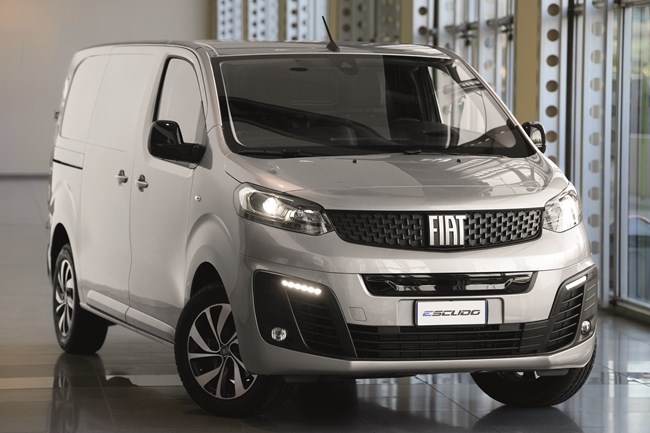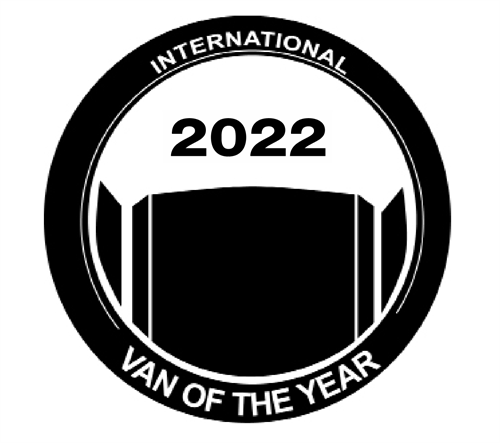- ETRUX launches new Ford E-Transit Trizone
- Renault gives UK debut to Master E-Tech at CV Show
- Isuzu D-Max long-term test – Latest Report
- Isuzu D-Max V-Cross Steel Edition revealed
- IVOTY Report: Stellantis explores the hydrogen proposition
- New Maxus EVs include eDeliver 5 van
- Used LCV values reach six-month high
- ADVERTISEMENT FEATURE: IVECO Daily Mission Awards 2024 Q2 Round-up: Grounds Maintenance & Forestry
- Stellantis Pro One electric vans review
- Mitie adds 5,000th EV to fleet
IVOTY Analysis: A question of identity
Date: Thursday, December 1, 2022 | Author: George Barrow
Fiat Professional has undergone a period of forced reinvention since coming under the Stellantis umbrella.

It’s been nearly two years since the January 2021 takeover of FCA by Groupe PSA and the subsequent merger of the brands under the Stellantis umbrella.
During that time each of the brands has launched several new models as the push for electrification continues but amongst the LCV nameplates that include Citroën, Peugeot and Vauxhall, it is Fiat Professional that has arguably had the hardest job of all.
Not only has it had to find its position in the new Stellantis structure, but many of its own joint venture deals – largely with Renault – have come to an end. The net result has been a hasty relaunch of new products based on the shared group platforms and a good deal of playing catch up, and no doubt head-scratching, to differentiate itself with its new products in a marketplace that has already become accustomed to the existing PSA models.
Fortunately, Fiat is inheriting some of the newest and best LCV platforms in the market, but has several hurdles to overcome, including relaunching the Doblò – a vehicle that failed to captivate British buyers – and bringing back the Scudo to replace the mid-sized Talento van, which had finally been establishing itself in a heavily congested and competitive segment.
There’s also the sizeable matter of launching electric versions of both models into the market and being unable to differentiate them in Fiat’s traditional way with alternative engine or gearbox options.
The standardisation of drivelines across the Stellantis portfolio and the use of single motors for EV models takes away a strong USP for the Italian manufacturer.
Of course, Fiat is no stranger to carving out its own island in a sea of joint venture products and even has a long-standing relationship spanning more than four decades on the production of large vans with Citroën and Peugeot. The Ducato still manages to distinguish itself successfully from the others and has forged its own niche as the European motorhome chassis of choice. That separation, however, has occurred through offering different transmissions, power ratings and even sector specific alterations in the case of the motorhome to make it more appealing to bodybuilders and buyers.
How much personalisation Fiat will be able to achieve under Stellantis remains to be seen, as simplifying the range to increase productivity and output for all brands during the production process is part of the Stellantis route to efficiency.
Fiat Professional has benefitted from these proven, successful and award-winning products, though, and has other differentiating factors to fall back on, according to Pierre Janthial, Stellantis Enlarged Europe LCV Area operation manager Electrification Business Development.
“Fiat Professional is dedicated to business-to-business operations, with a broad skill set to meet specific operator demands, with more capacity to meet the exact specification requirements and aftermarket needs of the customer. In addition, the Fiat Professional LCV Centres, have their workshops open longer hours each day, have the technical expertise and are fitted with all equipment necessary to service the larger and heavier Ducato variants,” Janthail says.

The history of many of the dealerships with Fiat Professional franchises also means that there is a naturally higher percentage of dealership representation across Europe and beyond that share truck sales and heavy commercial vehicle service centres. This gives much of the network a strong USP that other more passenger car-focused manufacturers don’t have. This also lends itself to the more specialist conversions that chassis like the Ducato are renowned for with the Fiat Professional network more accustomed to dealing with repair and servicing on campervans and motorhomes.
Janthail also sees great sales potential with the E-Scudo, due to a growing number of low emission zones across European cities dovetailing with the continuous increase in door-to-door, last mile deliveries from internet sales.
Another significant change has been restoring the Scudo name which was introduced in 1995 in a joint venture with Citroën and Peugeot at their Sevel Nord plant for the first-generation van before ending in 2016 when the platform was switched to the Renault Trafic chassis.
Danilo Coglianese, Fiat Professional head of global communications, highlights the significance of this move backwards in order to go forward: “The Scudo name has a rich heritage, a great tradition and together with the team at the Centro Stile design team in Turin, we have created a unique look and feel to the van, featuring the new grille Fiat badge, which in itself reflects on the past and is instantly recognisable.”
The chunky new Fiat badge was first introduced on the Fiat 500e but the Scudo is now the second model to wear it, a decision which Coglianese believes was necessary.
“A complete change was needed,” he added, “It’s a statement to mark the new era at Fiat and all new vehicles will have it.”
Indeed, the next new model to receive the badge is the fifth generation Doblò. The recently launched van is now being produced within the Stellantis family at a former PSA plant in Spain instead of the Tofas factory in Bursa, Turkey. Like its siblings and the licenced Toyota Proace City, it gets its own unique minor front-end styling changes but a reduced portfolio of body options when compared to the outgoing model, losing its XL high-roof and Work-Up pick-up variants as direct from the factory options.
But the collaboration with Stellantis isn’t all one way, and doesn’t stop at the light commercial end of the spectrum. Fiat is likely to transfer its technology developed for the Fiat eDucato with the larger Peugeot/Citroën/Opel and Vauxhall vans that are currently using electrical systems from a third party. There’s also the integration of hydrogen drivetrain energy supply, led by Opel in Germany, for mid-sized vans that will spread across the other brands in due course. While Fiat will benefit from the technology, Italy, its biggest market, is far behind Germany and France when it comes to the hydrogen infrastructure required to make it work.
Don’t write off Fiat’s return to the pick-up truck segment either. It’s short-lived marketing of the 1.0t pick-up the Fullback, based on the Mitsubishi L200, could well be rejuvenated
thanks to experience from sister brands Jeep, RAM and Fiat itself (from South America with the Toro model). While any outcome is unlikely to reach the UK market, there’s a possibility that Europe could get a variation of the new Peugeot Landtrek pick-up launched last year for African markets. The stumbling block of engine emission requirements currently preventing Landtrek sales elsewhere in the world won’t be an issue when electrification does finally come to the pick-up segment. Stellantis’ broad portfolio could well feed into even more product sharing between brands and in sectors that are not currently active.
Semi-conductor shortage consequences
Launching a new line-up of vans in the aftermath of a pandemic – where van sales boomed and production schedules then faltered due to component shortages – was rotten luck for Fiat Professional. However, the merger with Stellantis brings with it tremendous economies of scale, such scale that in the C-segment (small vans) the brands enjoy a whopping collective 63% market share.
But there have had to be some changes to keep the vehicles flowing and a degree of rationalisation has been necessary when it comes to the specification of the vans leaving the factory.
Recently I heard a top industry executive admit that pre-2020 they literally had no idea what a semi-conductor was, but as a result of the shortage they could now name every single part of their vehicles that contains one. It’s affected almost every facet of production.
At Fiat the story is the same, and it has meant some unexpected changes. Semi-conductor supply issues resulted in leather steering wheels being made unavailable at one point. Although the material was available, it was the semi-conductor used in the steering wheel to detect steering inputs and movements for driver alertness or lane assist functions that were affected. As these systems require a leather-wrapped steering wheel they had to be taken off the options menu along with the other semi-conductor reliant systems.
George Barrow is the UK judge for the International Van of the Year, the prestigious prize awarded by leading European LCV journalists.
View The WhatVan Digital Edition


